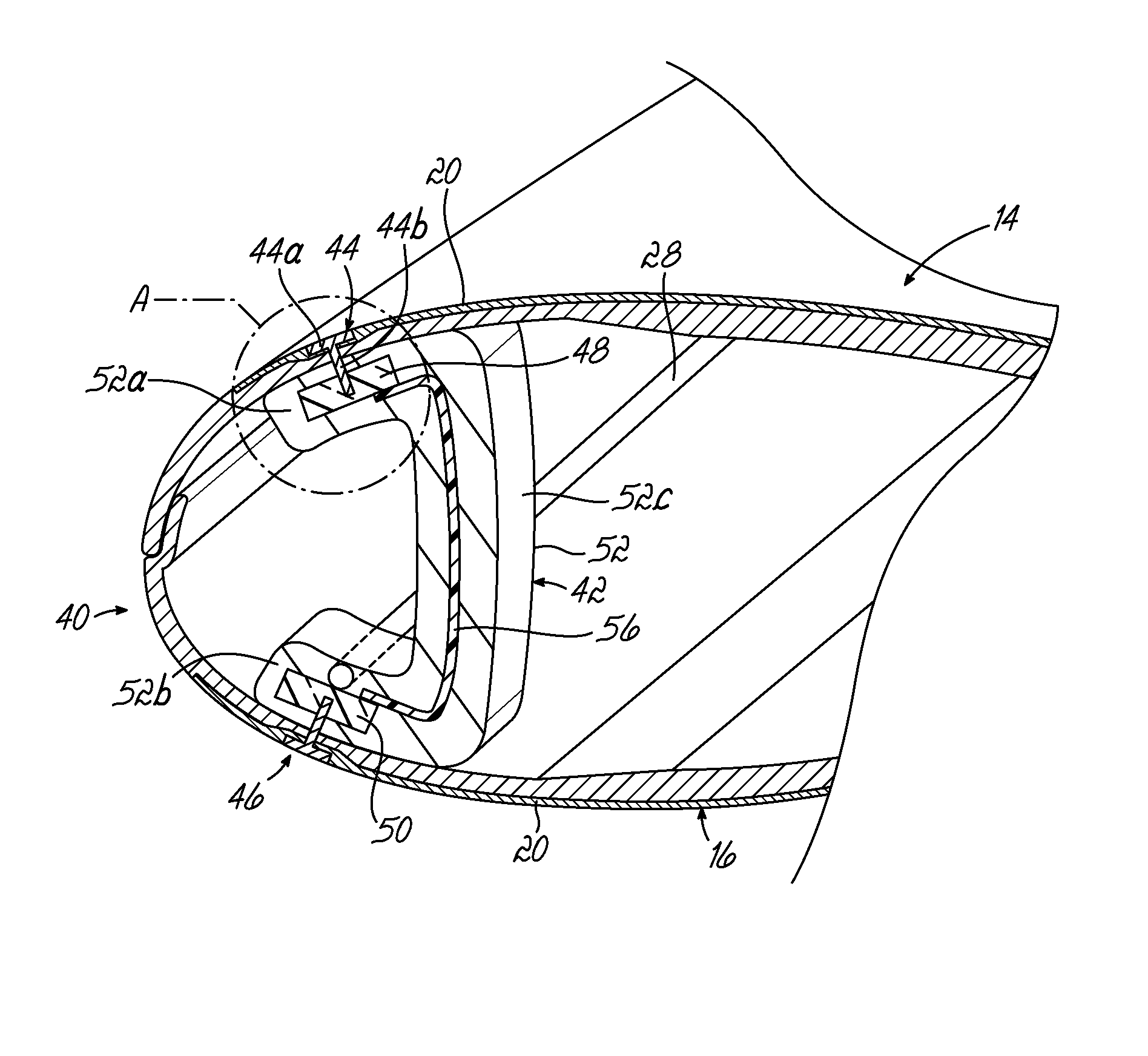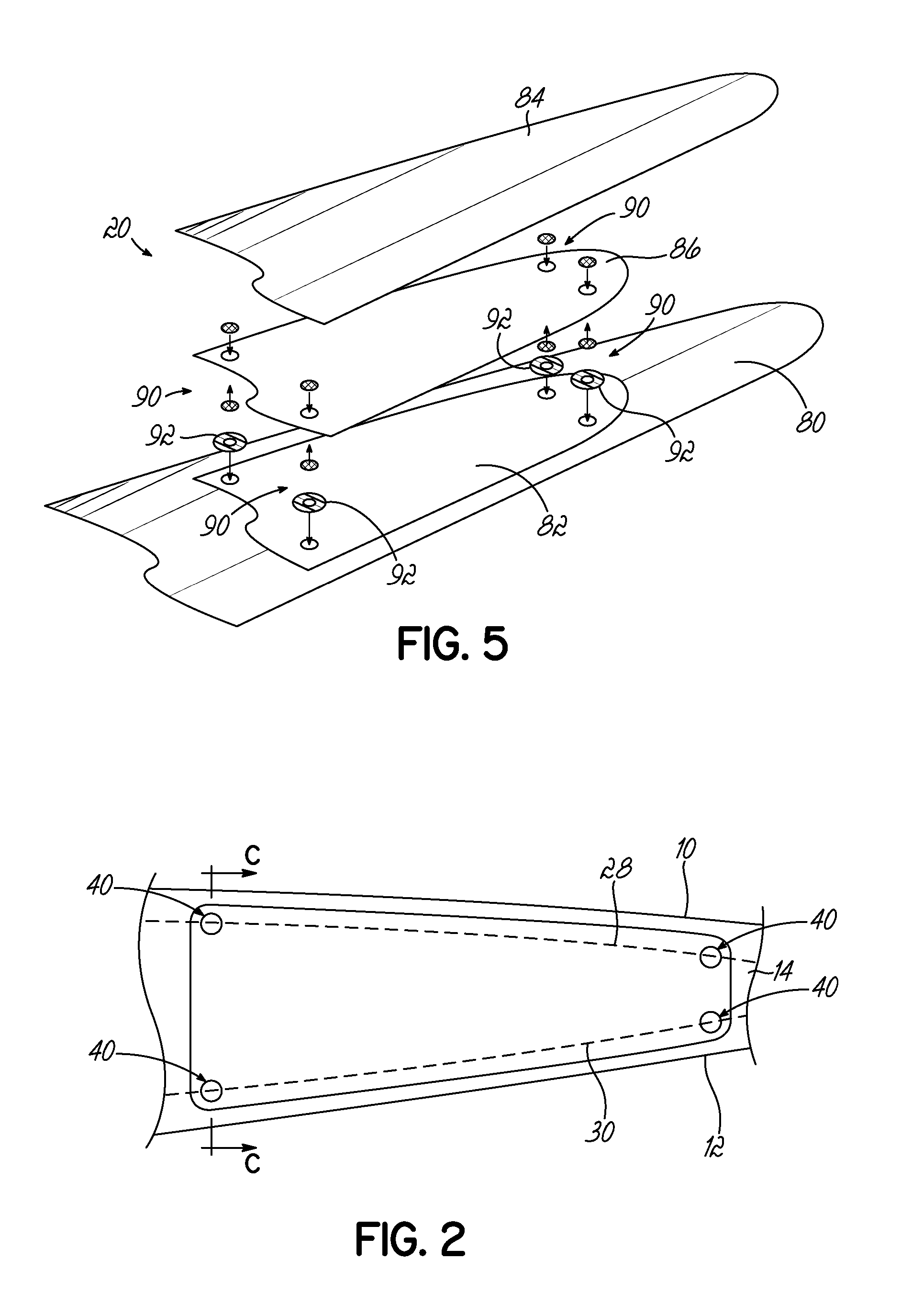Improvements relating to lightning protection systems for wind turbine blades
a technology for lightning protection and wind turbine blades, which is applied in the field of lightning protection systems for wind turbine blades, can solve the problems of wind turbines being vulnerable to being struck by lightning, physical damage to turbine blades, electrical damage to the internal control systems of wind turbines,
- Summary
- Abstract
- Description
- Claims
- Application Information
AI Technical Summary
Benefits of technology
Problems solved by technology
Method used
Image
Examples
Embodiment Construction
[0027]With reference to FIG. 1, a wind turbine blade 2 incorporates a lightning protection system 3. The blade 2 is formed from a blade shell 4 having two half-shells. The half-shells are typically moulded mainly from glass-fibre reinforced plastic (known as ‘GFRP’ or, simply ‘GRP’) that comprises glass fibre fabric embedded in a cured resin matrix. The precise construction of the blade shell 4 is not central to the invention and so further detailed description is omitted for clarity.
[0028]The blade comprises a root end 6, at which the blade 2 would be attached to a rotor hub of a wind turbine, a tip end 8, a leading edge 10 and a trailing edge 12. A first surface 14 of the blade 2 defines an aerodynamic profiled surface that extends between the leading edge 10 and the trailing edge 12. The blade 2 also includes a second surface also extending between the leading edge 10 and trailing edge 12, which is not shown in the plan view of FIG. 1, but which is indicated as reference numeral ...
PUM
| Property | Measurement | Unit |
|---|---|---|
| peak current amplitudes | aaaaa | aaaaa |
| thickness | aaaaa | aaaaa |
| thickness | aaaaa | aaaaa |
Abstract
Description
Claims
Application Information
 Login to View More
Login to View More - R&D
- Intellectual Property
- Life Sciences
- Materials
- Tech Scout
- Unparalleled Data Quality
- Higher Quality Content
- 60% Fewer Hallucinations
Browse by: Latest US Patents, China's latest patents, Technical Efficacy Thesaurus, Application Domain, Technology Topic, Popular Technical Reports.
© 2025 PatSnap. All rights reserved.Legal|Privacy policy|Modern Slavery Act Transparency Statement|Sitemap|About US| Contact US: help@patsnap.com



